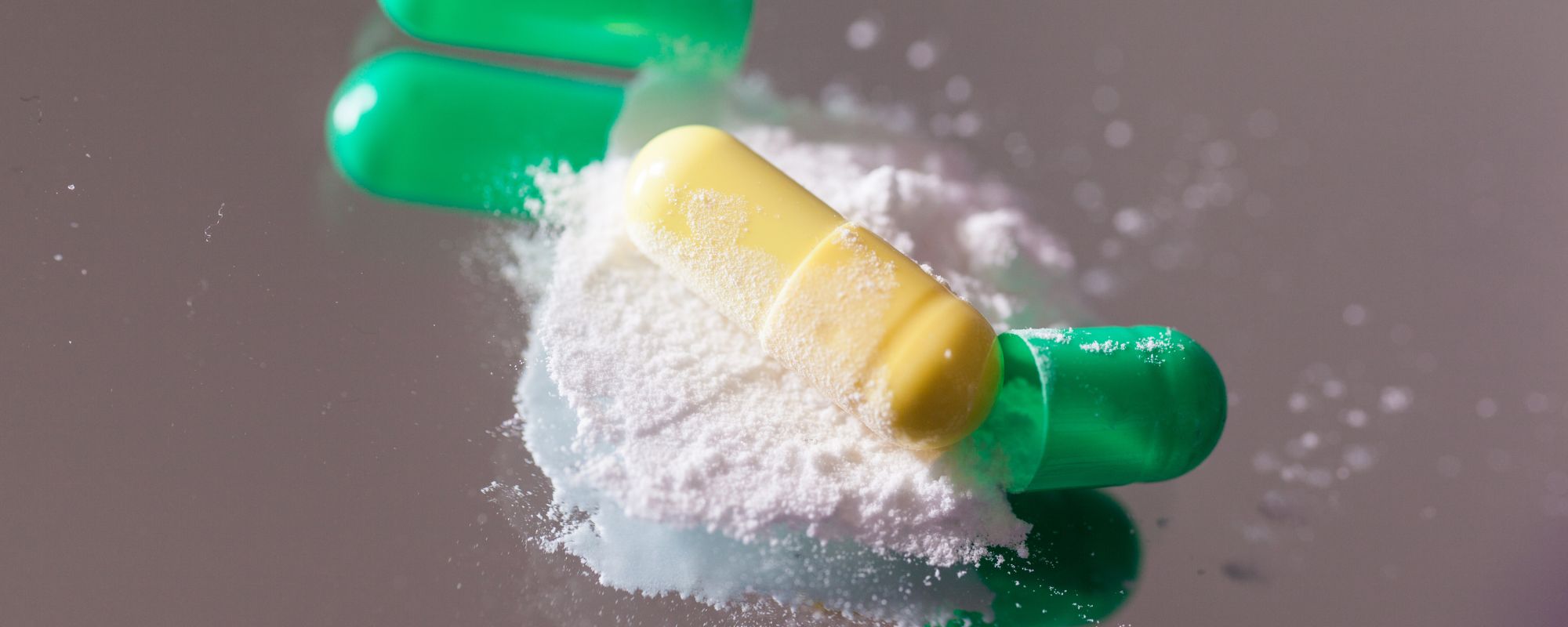If you’ve asked yourself, “How long does cocaine stay in your body?”, it could be coming from a subconscious place of worry or regret or a palpable realization that using cocaine was a mistake.
And there’s good reason to feel that way since it’s well-known that cocaine is one of the most harmful drugs affecting the lives of millions of people. If you’ve used it once or twice, you might be feeling some ill effects and wondering if it’s a sign of something more serious. If you’ve become a regular user, you might have an inkling that you’re getting hooked on the drug and be worried about what will happen if you continue using it.
Or you might question, “How long does it take to pass a drug test after using cocaine?”, concerned about failing a drug screening for a new job that could adversely impact your livelihood in addition to your health and well-being.
These questions point to an awareness and an obvious sign that you’re open to looking at your cocaine use and how the body processes it — important realizations to quitting before cocaine use becomes problematic and seeking help if it does.
What Is Cocaine?
Powerful is a word commonly used to describe cocaine, a stimulant produced from the leaves of the South American coca plant. Cocaine is typically found in three forms:
Powdered cocaine, known for its fine, white appearance, is crushed down from hydrochloride salt and can be injected into a vein, snorted through one’s nostrils, or rubbed onto the gums.
- Crack cocaine (named for the sound the cocaine rock makes while being heated) can be smoked in freebase pipe form.
- Cocaine paste can also be smoked.
Cocaine works by influencing the brain’s limbic system, which regulates pleasure and motivation and activates your brain’s dopamine receptors. “This dopamine surge, simultaneous with the euphoric effects of the drug, teaches the brain that this reward is desirable and to seek it again,” notes the National Institute on Drug Abuse (NIDA).
A cocaine high is fleeting (five minutes to half an hour) but intense, marked by feelings of euphoria, alertness, and confidence.
Is Cocaine Addictive?
One reason why repeated, chronic cocaine use makes it so addictive is the tangible changes it makes to the brain. In a normal functioning brain, dopamine is like a chemical messenger sending signals from neuron to neuron, explains the NIDA.
But cocaine acts as a kind of disruptor. It interrupts and interferes with this process, attaching itself to your brain’s dopamine receptors and flooding them with a surge of the hormone (more than your brain would normally produce) responsible for the drug’s high that leads users to want more of it.
However, the more one takes any addictive drug, cocaine included, the more the body and brain become used to it, leading you to take more of it, more frequently, to match those initial highs when you were new to cocaine.
This tolerance leads to dependence, when you depend on a drug to function. Addiction takes hold when you can’t stop using a drug — even if you want to — without the onset of severe, sometimes life-threatening, withdrawal symptoms. “Many (people) report that as tolerance develops, they fail to achieve the positive effects they experienced when they first began using the drug; thus, they begin to use cocaine with greater frequency and in larger doses,” says the National Drug Intelligence Center.
Can You Overdose on Cocaine?
A cocaine overdose can happen even if it’s your first time trying it, and overdoses are often fatal. Cardiovascular symptoms are often present, like an irregular heartbeat, chest pain, hyperventilation/fast breathing, and an elevated body temperature. During a cocaine overdose, you might also experience stomach pain, nausea and vomiting, and uncontrollable convulsions.
“Individuals who use the drug may become restless, irritable and anxious,” says the Drug Intelligence Center. “Use of powdered cocaine also can result in constricted blood vessels and increased temperature, heart rate and blood pressure. Heart attack, respiratory failure, stroke and seizure also may result from cocaine use.”
Additionally, your risk of cocaine overdose magnifies when mixing it with other substances, like alcohol or opioids. “People combine these drugs because the stimulating effects of cocaine are offset by the sedating effects of an opioid; however, this can lead to taking a high dose of the opioid without initially realizing it,” says the NIDA. “Because cocaine’s effects wear off sooner, this can lead to an opioid overdose.”
Statistics About Cocaine Use in America
Statistics show that about 2.2 million people use cocaine regularly, with more than half -1.5 million people — meeting the diagnostic criteria for cocaine use disorder. And while cocaine use has actually declined among American adults within the last 25 years, its use among adolescents is rising, as cocaine abuse remains a pressing problem.
Some fast facts about cocaine:
- In 2017, 20% of more than 70,000 drug overdose deaths involved cocaine.
- The likelihood of developing cocaine dependence from first-time use is 7.1%, compared to just 2% for users of tobacco, alcohol, or marijuana.
- Additionally, 15% of cocaine users are likely to develop cocaine use disorder within 10 years compared to 8% of cannabis users and 12% to 13% of people who drink.
- There’s a hereditary risk for developing CUD — an estimated 65% in women and up to 79% in men.
- Cocaine use is linked to co-occurring mental disorders — 45% of users reported having a mood disorder and 31% an anxiety disorder. (Cocaine use triples one’s risk for depression, doubled for anxiety.)
- Studies show that adults not enrolled in college full-time are twice as likely to abuse cocaine than full-time students — a difference of 11.1% to 5.3%.
- 21% of people diagnosed with cocaine use disorder continue to use the drug weekly — after five years, that number rises to 25%.
Get confidential help from our addiction and mental health treatment facilities located across the United States. Call to join one of our quality programs today!
Speak With Our Admissions TeamHow Is Cocaine Metabolized?
Because cocaine has a shorter half-life than other drugs, the cocaine elimination time is quick. This is the amount of time it takes for a cocaine high to wear off or when withdrawal symptoms begin. Since cocaine’s half-life is only about an hour, your body begins metabolizing and breaking it down quickly to complete the cocaine processing time.
Your liver is the organ primarily responsible for cocaine metabolism, converting it into metabolites — primarily benzoylecgonine, as well as ecgonine methyl ester — which are eventually eliminated through your urine.
How Long Does Cocaine Stay in Your Body for a Urine Test?
How long does cocaine stay in urine is an important consideration if you’re due for an employment drug test that can make or break your hiring.
Cocaine drug tests using a urine sample are the most common and have the longest detection window, usually up to four days after you’ve last used the drug. That means if you used cocaine on a Saturday and you have a drug test on Monday morning, it will show up on your drug test. However, heavier or more chronic use has been known to remain present in urine levels for a week or more.
How Long Does Cocaine Stay in Your Body for a Blood Test?
Although urine testing is the most common for cocaine, testing for cocaine in blood is also sometimes utilized. The drug can be found in a blood test up to 48 hours later, and for its metabolites, anywhere from about 5.5 to 7.5 hours.
Blood tests are less commonly used for routine drug screening due to their invasive nature and shorter detection window, and they’re more likely to be used in medical emergencies, post-accident investigations, or legal situations.
How Long Does Cocaine Stay in Your Body for a Saliva Test?
Cocaine in saliva testing is another method that might be used for an employment drug pre-screening. An easier way to test for the presence of substances through your saliva by swabbing the inside of your mouth (similar to a COVID test), this less invasive method can detect cocaine and metabolites for up to two days (48 hours) after your last use — though this timeframe may be longer for first-time users, since regular or more chronic cocaine users may take longer to metabolize it.
How Long Does Cocaine Stay in Your Body for a Hair Test?
Surprisingly, cocaine in hair testing has the longest cocaine detection times out of all these methods and is a more preferred method to determine long-time vs. short-term drug use. Cocaine and metabolites can remain detectable in your hair follicles for up to 90 days, or about three months — with one study reporting the finding of cocaine in hair up to six months later.
Why does hair testing have such a long detection window? “The rate of drug incorporation into the hair depends on the melanin content of the hair, the lipophilicity and the basicity of the drug substance as well as the growth phase of the hair,” notes the 2022 study. However, if you were to cut your hair short, it increases the likelihood of removing the strands where cocaine could be identified.
Factors That Affect How Long Cocaine Stays in the Body
Cocaine detection times may vary depending on the testing method, but there are also several variables that can influence cocaine elimination times and drug metabolism:
- Genetics and metabolism: Your metabolic rate is influenced by a number of chemical processes within your body’s cells and can play a big role in affecting the cocaine processing timeline. Some people may also have genetic variations unique to them that make them process drugs more quickly or slowly.
- Body composition: People with higher body fat percentages may retain traces of cocaine in their bodies longer since cocaine metabolites are fat-soluble and highly lipophilic. That means that cocaine can be stored in fatty tissues and affect your central nervous system, triggering cellular toxicity.
- Frequency and amount of cocaine use: The more often you use cocaine and the higher the dose, the longer it takes to eliminate it from your system. Regular, prolonged use, or worse, cocaine use disorder can lead to the accumulation of more metabolites, which can be detected for longer than those of a one-time or infrequent cocaine user.
- Method of use: Snorting, smoking, or injecting cocaine affects how quickly it enters your bloodstream and how it’s metabolized. (Injecting cocaine sends the drug into your bloodstream almost immediately, reaching the brain as quickly as 15 to 30 seconds.)
- Drug purity: The purity of cocaine — the percentage of a drug’s active ingredient — can determine how fast or slow cocaine remains detectable in the body. For instance, many variants of street cocaine often contain cutting agents and adulterants that may affect metabolism and cocaine elimination time.
- Polydrug use: Using cocaine alongside other substances, particularly alcohol, creates unique metabolites that may have longer detection windows. In fact, consuming alcohol and cocaine together produces a highly toxic metabolite in the liver called cocaethylene.
- Overall physical and mental health: The healthier you are physically, the more efficiently your body can filter out toxins and metabolize cocaine. Poor mental health may exacerbate cocaine abuse; studies show a high psychiatric comorbidity among crack cocaine users.
Looking for quality treatment for substance abuse and mental health that’s also affordable? Aliya Health Group's treatment facilities accept most major insurance providers. Get a free insurance benefits check now!
Check Your CoverageWhat Is Cocaine Addiction Treatment Like?
Because cocaine is so addictive, treating cocaine use disorder needs to follow a specific trajectory. You can’t skip detoxing from the drug and go straight into therapy or only detox from the drug without pursuing additional treatment. It involves a structured approach that addresses both the physical and psychological aspects of dependency.
Medical Detox for Cocaine Addiction Treatment
Detoxification, or detox, is the process of stopping the use of a drug, giving it time to clear from your system, and mitigating and managing any subsequent withdrawal symptoms — for cocaine, this can include depression, fatigue, loss of appetite, agitation, restlessness, and slowed physical activity.
Medical cocaine detox is not quitting cold turkey; it’s a process at a treatment facility where you have the 24/7 guidance and supervision of medical staff, like a doctor, nurse, and staff trained in addiction treatment, to supervise while minimizing any potential health risks. The cocaine detox timeline depends on the severity of withdrawal symptoms; the most acute, immediate withdrawal symptoms last about two weeks.
Inpatient Cocaine Addiction Treatment
Once detox is complete, the next phase of rehab is inpatient treatment, the first step towards greater healing and lasting sobriety. Inpatient treatment calls for you to stay in a treatment facility, where you’ll live onsite and devote your full-time, daily focus to getting sober without relapse triggers, distractions, or stressors. It’s following detox that you have a clean slate to begin inpatient treatment, a setting with round-the-clock support, structured therapy sessions, and a safe environment to begin your recovery.
Outpatient Cocaine Addiction Treatment
An outpatient treatment plan enables you to take advantage of the same benefits of therapy as you would during inpatient treatment, only you’re allowed to return home at the end of the day. Outpatient treatment is often the next step many people with cocaine use disorder take after completing an inpatient stint, or for those whose addictions aren’t as severe and don’t require the same level of intensive supervision. Outpatient is an ideal compromise — a balance between the same high level of care and your ability to fulfill personal and professional obligations.
Aftercare for Cocaine Addiction
Aftercare remains a specific component of the recovery process, reaffirming that treatment doesn’t have to end following your stay in rehab. It involves continuing care and resources after you’ve finished inpatient or outpatient treatment, helping in your transition from the structure of a treatment environment back to your regular life. Here, you’ll have the opportunity to keep attending individual or group therapy sessions or support groups, including in your own community — you may find 12-step programs like Cocaine Anonymous particularly valuable. Aliya can also connect you with transitional housing opportunities, a bridge between treatment and independent living.
Therapies for Cocaine Addiction Recovery
A well-rounded treatment program for cocaine addiction ideally involves a blend of clinical therapy with alternative approaches focused on total wellness:
Evidence-Based Psychotherapy
When therapy is research-based, it means that it’s been backed in scientific and clinical settings as effective in treating substance use disorders. For cocaine addiction, psychotherapy might include cognitive behavioral therapy.
CBT, for short, sees you talk one-to-one with a therapist to identify your motivations for using cocaine. What are the underlying reasons? Are they linked to any other possible conditions, like depression? CBT aids you in conquering negative thoughts that could be influencing drug use, replacing them with more positive perspectives and a new, positive approach to living drug-free.
Holistic Recovery Options
Complementing traditional therapies, holistic approaches address your whole person — mind, body, and spirit — that can be impacted by cocaine use.
A holistic treatment plan might include yoga or meditation to connect you with a more mindful approach to living, helping you to live more intentionally and completely without the need to use cocaine. Art or music therapy becomes an outlet for expressing yourself in ways where words may initially be difficult in talk therapy. Nutritional and life skills counseling go hand in hand with rebuilding the everyday responsibilities that drug use may have dulled.
Finding a Cocaine Addiction Treatment Facility
No matter where you are, know that cocaine misuse can be treated, whether you’ve had a chronic problem for some time or just begun to notice that your use (or in a loved one) has become increasingly troubling. Aliya Health Group has 18 different treatment centers based in eight states and is experienced in helping people with substance use disorders of all kinds (like cocaine, opioid, or heroin addiction) and mental health treatment.
Knowing how long does cocaine stay in your body is just the first piece of information you need. We can provide you with more on what treatment involves, from what your tailored plan may look like to cost and insurance options. But the change begins with you. Contact us today, either by calling one of our specialists or emailing us — we’re on hand 24/7.
- https://pmc.ncbi.nlm.nih.gov/articles/PMC9451050/
- https://pmc.ncbi.nlm.nih.gov/articles/PMC6579709/
- https://nida.nih.gov/research-topics/cocaine#what
- https://dmh.lacounty.gov/our-services/employment-education/education/cocaine/
- https://pmc.ncbi.nlm.nih.gov/articles/PMC2851032/
- https://www.goodrx.com/conditions/substance-use-disorder/signs-of-cocaine-overdose
- https://www.justice.gov/archive/ndic/pubs3/3951/3951p.pdf
- https://pmc.ncbi.nlm.nih.gov/articles/PMC6579709/
- https://analyticalsciencejournals.onlinelibrary.wiley.com/doi/10.1002/dta.2153
- https://www.medicalnewstoday.com/articles/how-long-does-cocaine-stay-in-your-system#how-long
- https://www.nature.com/articles/s41598-018-21182-7#:~:text=Cocaine%20is%20one%20of%20the,different%20levels%20of%20cellular%20toxicity.
- https://my.clevelandclinic.org/health/body/21893-metabolism
- https://www.drugsandalcohol.ie/glossary/info/purity#:~:text=Purity,or%20strength%20of%20a%20drug.
- https://pmc.ncbi.nlm.nih.gov/articles/PMC8885871/
- https://pmc.ncbi.nlm.nih.gov/articles/PMC1414771/
- https://www.healthline.com/health/substance-use/cocaine-detox#timeline
- https://ca.org/







